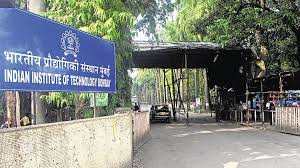Rajinder Singh is a prolific writer in History of Science dealing with contributions of Indian Scientists. The monograph under review is the 17th volume in the series. In the preface, author writes: "From the Niels Bohr Archive in Copenhagen, I found that B.B. Ray was the first Indian to work under the Dane, Niels Bohr. Ray's correspondence with physicists like N. Bohr, Samuel Goudsmit and Y. Nishina is not only about the exchange of scientific ideas, but also about the private and political situations. This aroused my interest and I searched for his biography but without success."
Professor S.C. Roy, Editor-in-Chief Science and Culture, writes in his foreword of this monograph: "Rajinder has the capability of digging up water out of a hard rock. .....In my opinion, Rajinder is an investigative historian who is always on the run to discover new things, new materials etc. In the process he has written biographies of some Indian scientists like S.K. Mitra, D.M. Bose and U.N. Brahmachari, who were eminent in their own field of research. A biography of B.B. Ray was long overdue. Our kudos to Rajinder for filling this void."
In the introduction, the author states that the book intends to explore: (i) general aspects of B.B. Ray's life, (ii) his contacts with Rabindranath Tagore and Subash Chandra Bose, (iii) his research in meteorology, (iv) his contribution to atomic physics through X-ray spectroscopy, (v) reception of his scientific work in India and internationally, and (vi) Ray's contact with international and national scientific community. Despite the fact that author has taken lot of pains to collect and collate information extracted from Niels Bohr Archive in Copenhagen; Philosophical Archive, University of Konstanz, Germany; Archive of University of Calcutta, and from family and friends of B.B. Ray, he is not fully satisfied with his present work due to lack of some original documents in support of B.B. Ray's forays outside the domain of his academic work.
B.B. Ray was born on July 1, 1894 in a village of Khadarpara in East Bengal, now Bangladesh. He was a brilliant product of Calcutta School of Physics. B.B. Ray started his research carrier under Sir C.V. Raman. He was awarded D.Sc. of Calcutta university for his thesis on meteorological optics. On the recommendation of Raman, he was awarded T.N. Palit Foreign Scholarship to work on X-ray scattering in Niels Bohr Institute at Copenhagen. Probably due to Niels Bohr's advice, B.B. Ray decided to travel to Sweden and work with M. Siegbahn, wo was an authority on X-ray spectroscopy.
After arriving at Uppsala, Ray started his observations on Kα lines in pure metallic powders in M. Siegbahn's laboratory. By applying Sommerfeld's theory of fine structure, they calculated the frequency difference of Kα doublets. Their experimental results were in support of Bohr's atomic theory. Ray also proved the validity of Bohr's model in the case of Lα values for different elements. When Bohr came to know about Ray's work in Uppsala, he invited him to Copenhagen. Ray published two papers from Copenhagen which were communicated by Bohr.
Bohr was so much impressed by Ray's research work carried out in Uppsala that he recommended for six months extension in his stay in Copenhagen for theoretical interpretation of his experimental results. Bohr wrote three letters to authorities of Calcutta university with hardly any response to his pleas. Ray's application for the post of Senior Lecturer at the university of Calcutta was also recommended by Bohr on 31 Oct. 1925.
On return to Calcutta, Ray had to face both private and official problems. His health deteriorated and on academic front, he felt almost humiliated as neither space nor funds were made available by the Calcutta university for setting up a research laboratory in X-ray spectroscopy. In Oct. 1927, Ray was offered the post of a Reader in Physics at the Dacca University at double his salary at Calcutta University but he was not allowed to join due to his bond executed with the Calcutta University prior to leaving on Travel Fellowship. Raman pleaded with University authorities to retain Ray by offering higher salary but in vain. In 1934, Ray received the Ghosh Travel Fellowship for his second visit to Europe. He met his old colleagues in Europe and travelled to Germany and Italy before his return to India. During this trip, M. Siegbahn communicated his paper on L-series of Barium and Cesium.
B.B. Ray's Theory of Glory and Controversy over the Ray Effect
The notion that the brightness of the daytime sky is due to the reflection of sunlight by suspended particles in the air was formulated by Alhazen, an Arabic scholar during 11th century. Rayleigh's theory of scattering of light was modified by Ray and found that intensity of scattered light depends on the polarized character of the light. For light waves, he numerically calculated the values of amplitude and phase for larger particles. Ray's theory was verified
experimentally in case of gold particles suspended in water as the colour of transmitted light turns from red to yellow and finally to blue. Ray's 1923 paper in Proceedings of Ind. Ass. of Cultivation of Science on scattering of light by liquid droplets, and the theory of coronas, glories and iridescent clouds is considered a classic one till today.
In 1930, B.B. ray observed some spectral lines in X-ray spectra, an analogue of Raman effect using X-rays scattering, but scientists of Europe and USA were unable to reproduce his results which led to controversy. Ray observed that a part of monochromatic X-rays in passing through carbon, nitrogen and oxygen undergoes a change in frequency and appears on the longer wavelength side of the primary radiation. He was of the opinion that this effect had a similarity with the Raman effect, which was theoretically predicted by Kramers and Heisenberg.
M. Boetzkes in Germany and J.M. Cork in USA repeated Ray's experiment and both got negative results. However, M.N. Saha came out in support of B.B. Ray. The experiments were carried out by research students of Saha in Allahabad University, namely, S. Bhargava, R.C. Majumdar and J.B. Mukerjee, in support of Ray's effect. Even Sommerfeld wrote a letter to A.H. Compton, which appeared in Physical Review, suggesting to re-interpret Ray's experimental results. Despite all this support, controversy over the "Ray Effect" failed to die down.
B.B. Ray's Social and Political Activities
According to Rajinder, B.B. Ray did not belong to Bengali intellectual elite by birth but he was well connected with S.N. Bose, M.N. Saha, C.V. Raman and other scientists of Calcutta School. After his marriage, he came in contact with Rabindranath Tagore, the first Indian Nobel Laureate. During his second trip to Europe, Ray went to Germany and met W. Heisenberg. There is a reference to a meeting between B.B. Ray and Subash Chandra Bose, the great Indian revolutionary, in this monograph. According to evidence gathered by author from Prof. D. Ray: "Netaji Subash Chandra Bose met Dr B.B. Ray before his great escape to Germany to have an introduction letter addressed to Prof. Heisenberg to meet Hitler".
In his correspondence with Bohr, Goudsmit and Nishina, there are oblique references to political situation in India but Ray had very poor opinion about Indian politicians. In one of his letters to Y. Nishina, Ray wrote: "You know I was once interested in politics, and I did a little bit when I came back here, but I have found out that the politicians are as a rule scoundrels, and I have given it up as hopeless, and returned to my laboratory, only to find also a horrible mess".
The most intriguing part of B.B. Ray's biography is his relationship with C.V. Raman and M.N. Saha. It is a well known fact in academic circles that both Indian giants had no love lost between the two. Ray was a research student of Raman, who always supported him in his academic pursuits, namely, visits abroad and entry into Calcutta University as a physics faculty. But later on Ray was won over by M.N. Saha and he turns against his mentor, C.V. Raman. Does it have some link to do with Bengali versus non-Bengali trait which was being hammered into Ray's mind by M.N. Saha? It is a predicament which needs some better explanation.
On the whole, the monograph is a valuable resource material on B.B. Ray's life and his scientific achievements, as the unsung hero of Calcutta School. I swam through this volume of 150 pages just in one sitting. It reads like a fiction story inter-woven with scientific facts, social and ethical values of pre-colonial Indian society, and predicaments of a young Bengali scientist who has lost his moorings. The author deserves appreciation for bringing out this biography as a volume under History of Science series. (India Science Wire)
-
Bidhu Bhushan Ray - A Pioneer of X-Ray Spectroscopy
Rajinder Singh, University of Oldenburg, Germany
Shaker Verlag GmbH, Aachen, Germany
Price: 21.90 Euro; Pages: 158.

.jpg)
